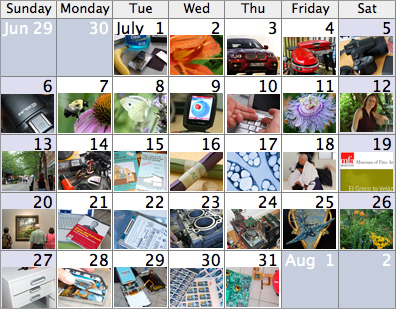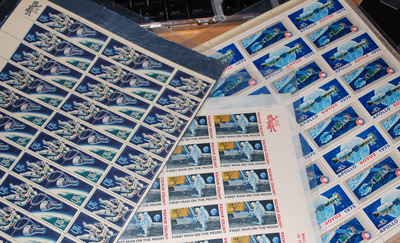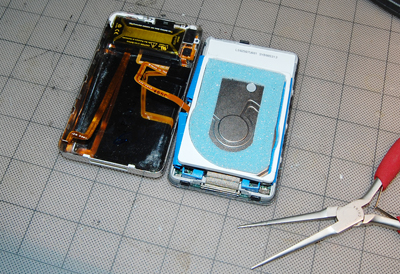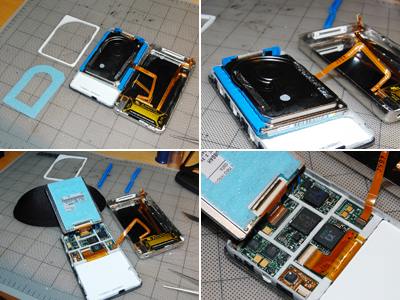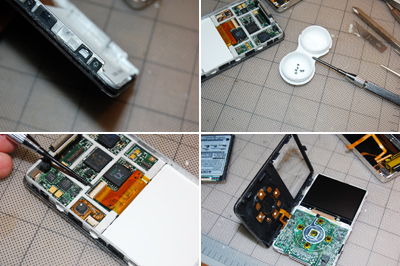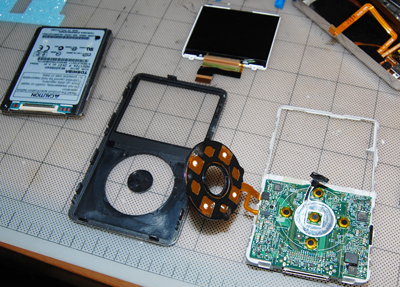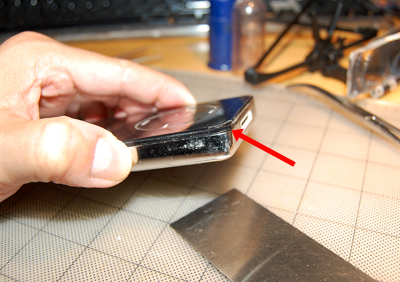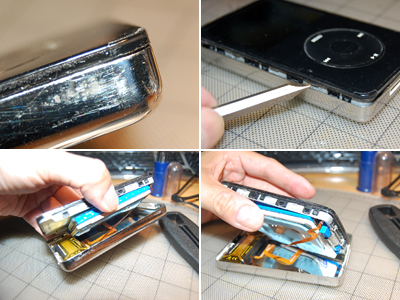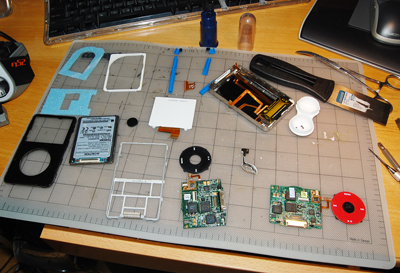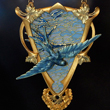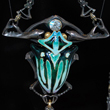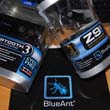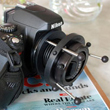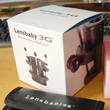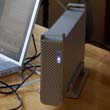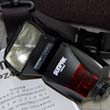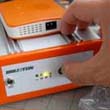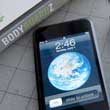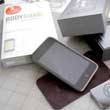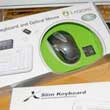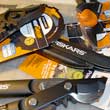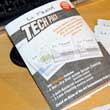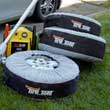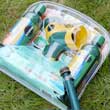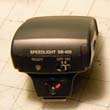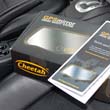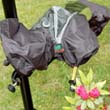In Tuesday's installment of this iPod repair series, we showed how to take the iPod apart. Today we will show how to swap out and upgrade the various components.

Our cool red "special editions" U2 clickwheel came from the folks at www.iDemiGods.com. They were recommended to us as the place to go for hard to find iPod parts. The new motherboard came from our friends at PowerbookMedic. We used them when we upgraded the processor for our G3 laptop. These guys really know their stuff when it comes to Apple hardware and their support staff is awesome.
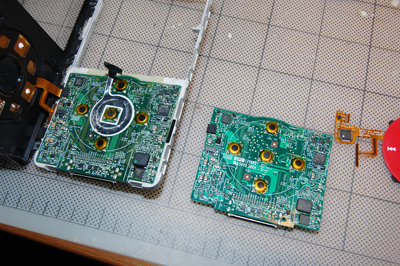
We learned quite a bit about the construction of the iPod during the disassembly process. In trying to remove the motherboard from the frame, we noticed there was a thin silicone film on the clickwheel area (red arrow). We realized that this gasket was probably to provide some protection to the electronics should a little moisture get in from the clickwheel.
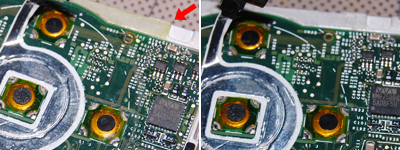
In order to remove the bad motherboard from the frame, we had to remove this film. Since we did not have a replacement gasket for the new board, we'll have to be extra careful to avoid getting this iPod wet in the future.
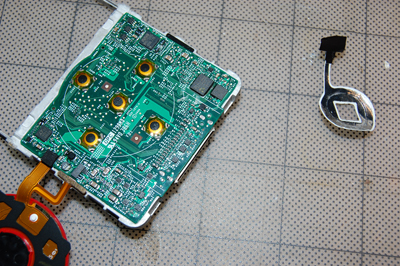
We also noted the clickwheel area was covered by a circular contact which connected to the frame. We assumed this piece was needed to complete the circuit for the clickwheel. The piece just lifts off. It was sticky enough to be placed back on the new board.

The new clickwheel and board went into the frame with no problems. We made sure we reattached all of the cable contacts to the same points on the frame. Our assumption was that they were either grounds or somehow needed to complete the circuit. Either way, we didn't want to have to debug things after eveything was reassembled.
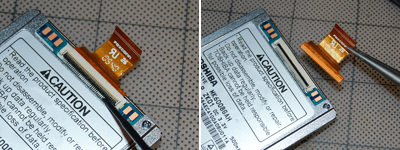
Before we could swap in the bigger drive, we needed to retrieve the connector cable. Like all the connectors, this had a brown lever which, when flipped up, released the cable. The new 80 GB drive we got came from www.kingipod.com. They are a full-service shop where they will tell you what's wrong with your iPod, fix it if possible, replace parts if required, and generally get it working again for you as quickly and inexpensively as possible. If you want to do the work yourself, they will also gladly supply what you need.

Putting the unit back together was considerably easier than taking it apart. Probably because we knew what to expect by then. The only anxious moment came when we pressed the "Play" button.

A few seconds went by before the Apple Logo appeared. The software automatically knew it needed to go into "recovery" mode and to sync things up Once it did what it had to do, it rebooted and everything came up working!
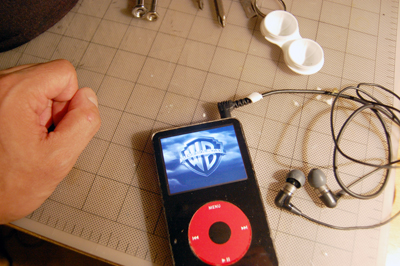
The entire project took about 2 hours to complete and involved working with a lot of small parts in a tight-fitting space. It would have been challenging had we not had the proper tools (clamps, magnifiers, small screwdrivers, etc...). However, there was nothing technically difficult about it and we think anyone with sufficient manual dexterity would have no problems with this fun little RainyDayProject. So if you happen to come across a broken iPod on EBay for a song, snatch it up and see if you can get it working again on your next rainy day :-) [Permalink] - Wan Chi Lau
|

